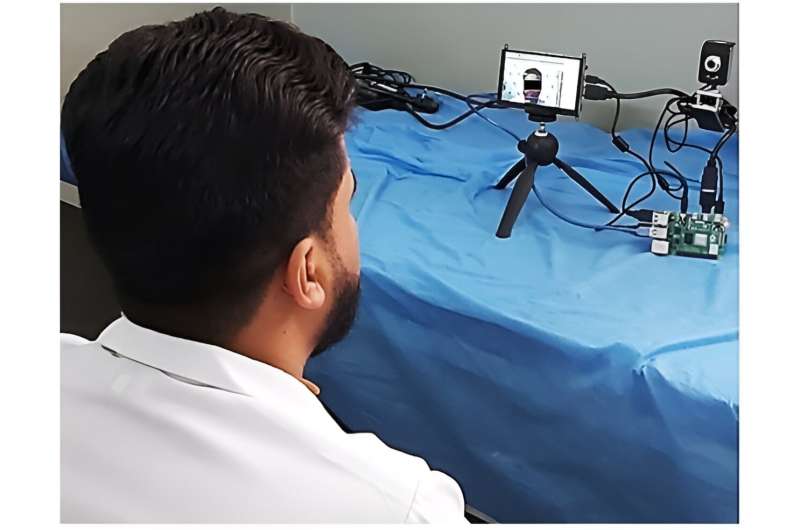This article has been reviewed according to Science X's editorial process and policies. Editors have highlighted the following attributes while ensuring the content's credibility:
fact-checked
trusted source
proofread
Digital camera and AI algorithm can now detect facial palsy

Computer scientists have developed a new diagnostic tool using artificial intelligence and a digital camera to detect facial palsy with 98% accuracy, including the patient's gender and age.
Researchers from Iraq and Australia say the tool can reduce diagnostic errors that often occur with this common and treatable neurological disorder.
Facial palsy is caused by impairment of the facial nerve, resulting in temporary muscle weakness or paralysis on one side of the face, affecting approximately one in 60 people worldwide during their lifetime. Less commonly, paralysis of the face may be caused by tumor, infection or stroke.
In a new paper, "Automatic Facial Palsy, Age and Gender Detection Using a Raspberry Pi," published in BioMedInformatics, researchers from the Middle Technical University (MTU) in Baghdad and the University of South Australia (UniSA) outline a real-time detection system for facial palsy using a microcomputer, digital camera, and a deep learning algorithm.
Using a dataset of 26,000 images, containing 19,000 normal images and 1,600 facial palsy images, researchers employed AI techniques to train computer vision systems to recognize the condition, differentiating them from healthy individuals. They then took photos of 20 patients with different degrees of facial palsy, using an algorithm to detect the condition in real time, as well as identifying their approximate age and gender.
University of South Australia remote sensing engineer Professor Javaan Chahl says the system achieved a 98% accuracy rate.
"Using computer vision systems to detect facial palsy could not only prevent misdiagnosis, but also save patients and medical specialists time, effort and cost," Prof Chahl says.
The researchers say that detection based on a visual examination can be inaccurate because facial palsy often mimics other conditions, and can be subtle in its presentation. Detection followed by investigation is important because possible causes include stroke, HIV infection, multiple sclerosis, Guillain-Barré syndrome and Lyme disease.
Previous literature reported in a 2020 paper estimates that misdiagnosis occurs in up to 20% of cases.
People most at risk of developing facial palsy are usually aged between 30 and 45 years, pregnant women, diabetics, and those with a family history. The left side of the face is also more likely to be affected but the condition normally resolves spontaneously within six months.
More information: Ali Saber Amsalam et al, Automatic Facial Palsy, Age and Gender Detection Using a Raspberry Pi, BioMedInformatics (2023). DOI: 10.3390/biomedinformatics3020031


















